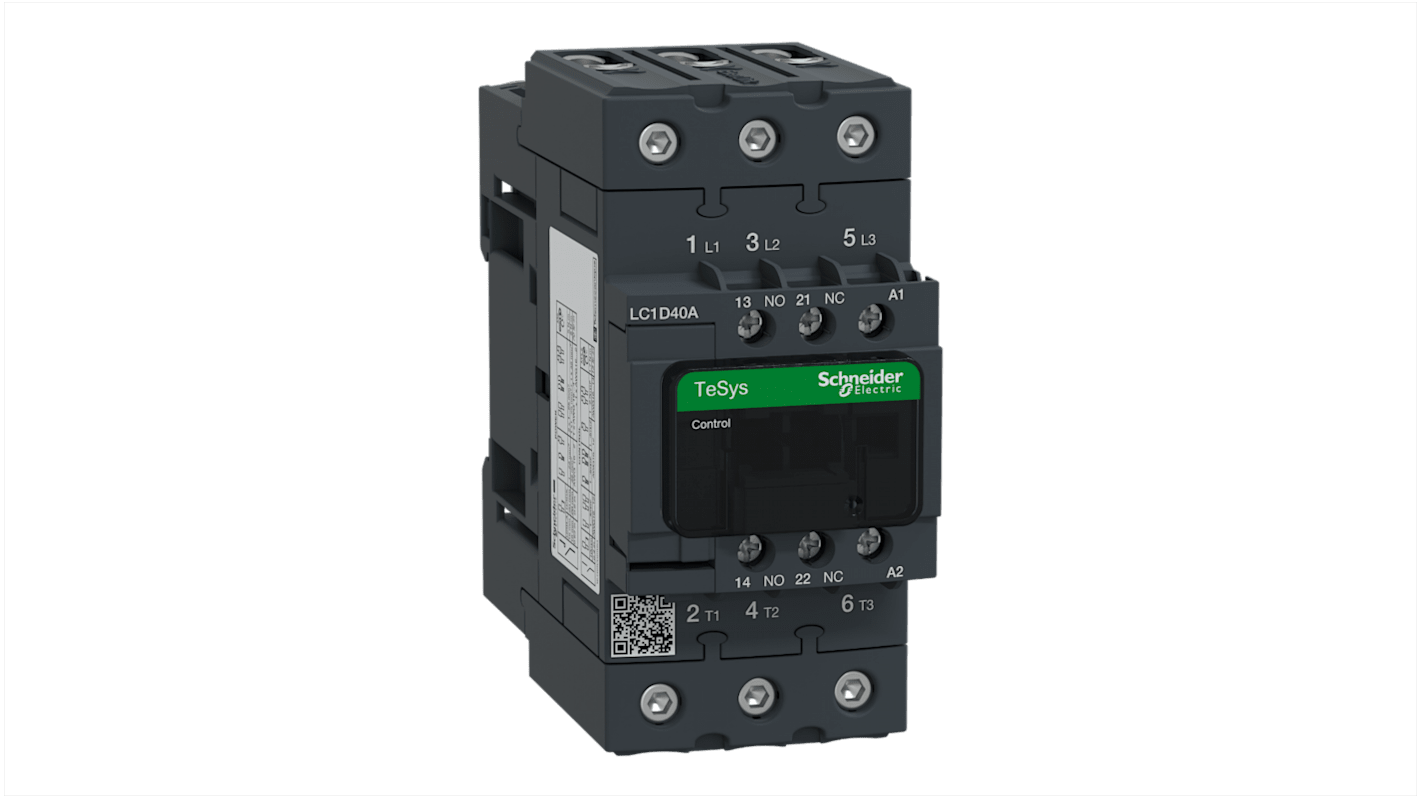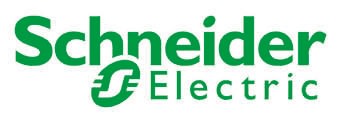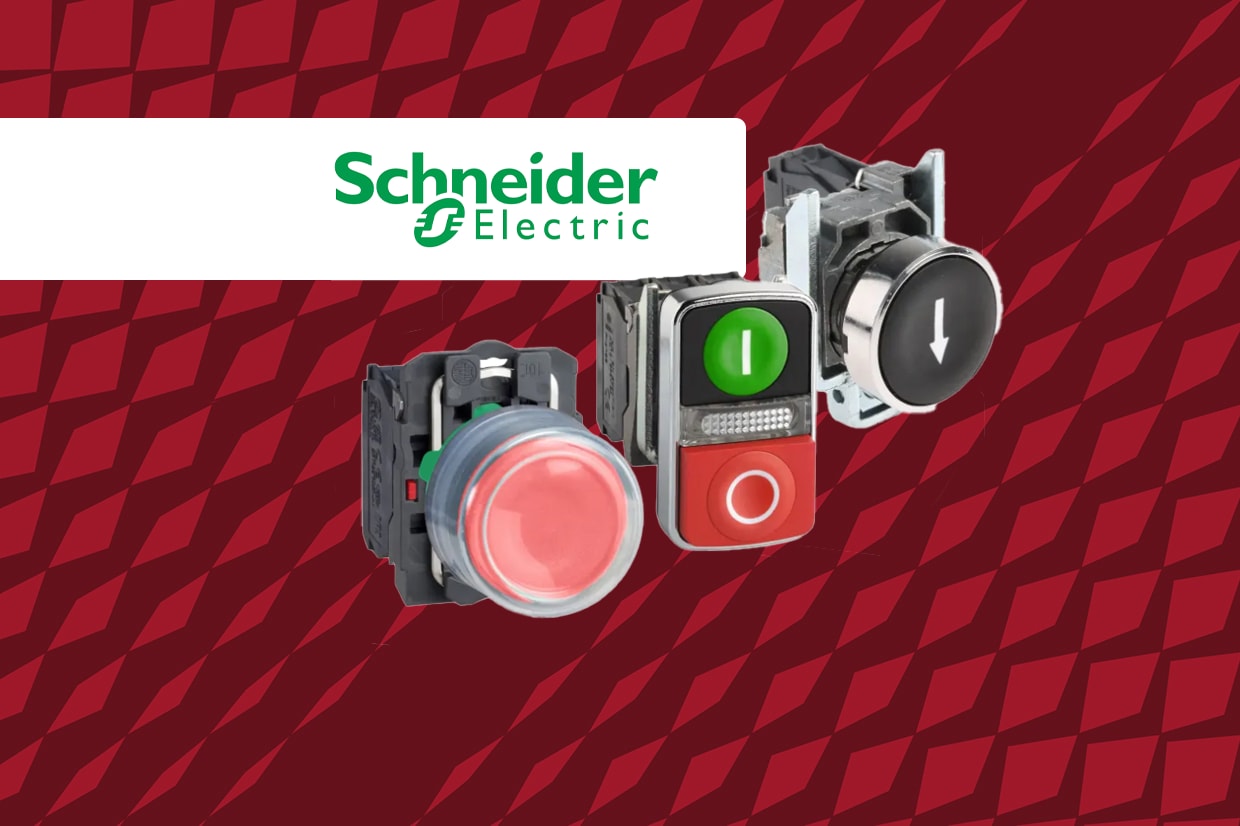Schneider Electric TeSys D LC1D Contactor, 48 V ac Coil, 3-Pole, 40 A, 18.5 kW, 3NO, 690 V ac
- RS Stock No.:
- 665-8006
- Mfr. Part No.:
- LC1D40AE7
- Brand:
- Schneider Electric

Subtotal (1 unit)*
£151.77
(exc. VAT)
£182.12
(inc. VAT)
FREE delivery for orders over £50.00
- 12 unit(s) ready to ship
- Plus 6 unit(s) ready to ship from another location
Units | Per unit |
|---|---|
| 1 + | £151.77 |
*price indicative
Better World
Our Better World range features products that make it easy for you to make a greener product choice you can trust. Click here to find out more.
- RS Stock No.:
- 665-8006
- Mfr. Part No.:
- LC1D40AE7
- Brand:
- Schneider Electric
Select all | Attribute | Value |
|---|---|---|
| Brand | Schneider Electric | |
| Coil Voltage | 48 V ac | |
| Number of Poles | 3 | |
| Contact Voltage Rating | 690 V ac | |
| Contact Current Rating | 40 A | |
| Power Rating | 18.5 kW | |
| Range | TeSys D | |
| Series | LC1D | |
| Normal State Configuration | 3NO | |
| Auxiliary Contact Configuration | 1NO + 1NC | |
| Number Of Auxiliary Contacts | 2 | |
| Terminal Type | Everlink | |
| Length | 122mm | |
| Width | 55mm | |
| Depth | 120mm | |
| Better World Product | Yes | |
| Better World Verification | Green Premium | |
| Pole and Throw Configuration | 3P | |
| Maximum Operating Temperature | +60°C | |
| Minimum Operating Temperature | -5°C | |
| Control Voltage | 48 V ac | |
| Mounting Style | Plate, Rail | |
| Select all | ||
|---|---|---|
Brand Schneider Electric | ||
Coil Voltage 48 V ac | ||
Number of Poles 3 | ||
Contact Voltage Rating 690 V ac | ||
Contact Current Rating 40 A | ||
Power Rating 18.5 kW | ||
Range TeSys D | ||
Series LC1D | ||
Normal State Configuration 3NO | ||
Auxiliary Contact Configuration 1NO + 1NC | ||
Number Of Auxiliary Contacts 2 | ||
Terminal Type Everlink | ||
Length 122mm | ||
Width 55mm | ||
Depth 120mm | ||
Better World Product Yes | ||
Better World Verification Green Premium | ||
Pole and Throw Configuration 3P | ||
Maximum Operating Temperature +60°C | ||
Minimum Operating Temperature -5°C | ||
Control Voltage 48 V ac | ||
Mounting Style Plate, Rail | ||
Schneider Electric TeSys LC1 - D Everlink Contactors
Features and Benefits
• Highly reliable
• Excellent quality
• Easily installed accessories
• TeSys contactors fitted with Everlink power terminals, with hexagon socket-head screw.
• Allows for a single piece starter assembly with an Everlink breaker (vertical or side by side assembly).
• 22 → 30 kW motor control, AC3 category at 440 Vac.
• Start control from 60 → 80 A for lighting and distribution
What does the utilisation category AC1 and AC3 mean for the TeSys contactors?
AC-1: This applies to all AC devices with a power factor of at least 0.95. Example of use: resistive load, heating, distribution.
AC-3: This applies to squirrel cage motors where breaking occurs while the motor is running. Example of use: all squirrel cage motors, lifts, escalators, conveyors, bucket elevators, compressors, pumps, mixers, air conditioning units.
What accessories are available?
• Front mount dust tight auxiliary contact blocks
• Pneumatic time delay blocks
• Transient voltage surge suppressors
• Interface modules and electronic timers
• Mechanical latching blocks
Is the TeSys D range a double break pole type contactor?
Schneider Electric Contactor, For AC Circuits, Includes Protective Cover - TeSys D Series - LC1D40AE7
Features & Benefits
• Flame-retardant for safety, so it's unlikely to contribute towards the spread of a fire
• End-of-life optimised to minimise the amount of waste going to landfill
• Mechanically linked auxiliary contacts for quick and easy system expansion
Applications
• Public-building infrastructure
• Breweries
• Automotive manufacturing



